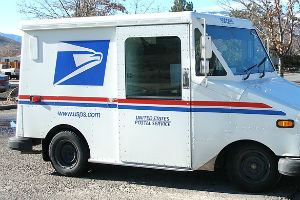There’s good news and bad news when it comes to the United States Postal Service (USPS), according to Robert Taub, acting chair of the Postal Regulatory Committee (PRC).
Most attendees at the Direct Marketing Association Nonprofit Federation (DMANF) Washington Nonprofit Conference knew about the bad news but Taub laid it out anyway. The Postal Service ended 2014 with a net loss of $5.5 billion – more than $900 million greater than planned – and in eight years USPS has posted net losses of $51.7 billion. USPS has already seen a $750 million net loss in 2015, and has only 21 days of liquidity at any given time.
Pension prefunding obligations for USPS have deepened the budget crisis and its traditional moneymaker – First-Class postage – has been declining due to the rise of email. The $67-billion operation has laid off nearly 200,000 employees and cut $16 billion in costs.
“In the postal world we have been hearing nothing but bad news,” said Taub. “But there is strength in the postal system that can often get overshadowed by the challenges. The strengths are the foundation on which Congress and the (Obama) administration can build.”
The Postal Service is the one governmental organization that touches the lives of nearly every American, every day, Taub said. The 240-year-old entity provides “a service people come to expect. Very few people go to their box wondering if the mail will be there. But will the mail always be there?”
Despite the challenges, according to Taub, there are a few bright spots. The rise of e-commerce has driven up the volume of packages and parcels that USPS handles. Overall, year-to-date volume is up 1.1 percent over this time in 2014, and net operating income is $1.1 billion, some $365 million more than last February.
But while 2015 might have started out marginally more positively than 2014, “The fundamental problem is that the Postal Service can’t generate the funds to cover its expenses,” said Taub. To begin fixing the USPS, he said: “We must first define universal service and what we need from it.”
There is a disconnect between what Americans know about the USPS and universal service, what they need from universal service and what they want. A survey showed that “70 percent of participants did not realize that the Postal Service is self-funded,” said Taub. “Upon learning that, they lowered their service expectations.”
Further, the survey showed that some 90 percent of respondents said their lives would be negatively affected if the USPS ceased to exist, but had trouble articulating exactly why. They were in favor of a more focused service, as opposed to the USPS simply creating new products and delivery options solely to increase revenue. “What Americans need is less than what they want, and they’re willing to make tradeoffs,” he said.
Taub closed his address by exhorting audience members to concentrate on the strengths of the Postal Service and remember how it touches people’s lives and enables them to reach more donors. “Let’s keep in mind the good news and take hope that Congress and the Obama Administration can build upon this foundation to find solutions,” Taub said. “The strengths will be the engine to ensure the Postal Service will continue to provide services.”
